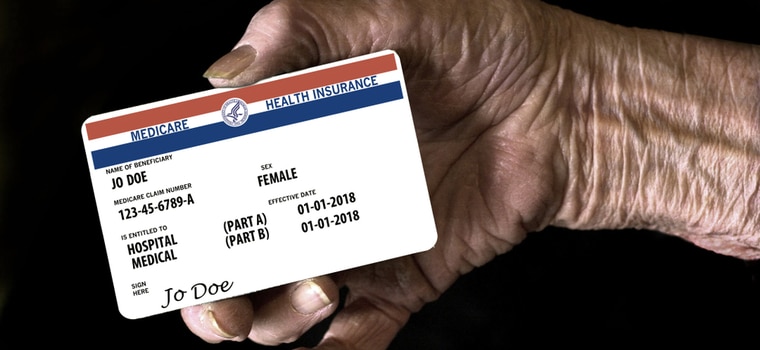If you are receiving Social Security benefits you will automatically be signed up for basic Medicare coverage when you turn 65. If you want additional coverage or if you are not receiving Social Security benefits or if you are eligible before you turn 65, you will have to enroll.
If you intend to enroll in Medicare you should understand what the different components of Medicare are, how much they cost and who is covered.
What Is Medicare?
Medicare is a health insurance program that covers American citizens or permanent residents over age 65 and some younger people with disabilities or specific conditions.
Medicare has several components, each of which provides a different form of coverage:
- Medicare Part A covers inpatient services at hospitals or skilled nursing facilities. It may also cover some hospice care and home health care.
- Medicare Part B covers doctor’s visits and other outpatient care, including ambulance services, some medical equipment and mental health treatment.
- Medicare Advantage, sometimes called Part C, is a private option that combines parts A and B with additional insurance for conditions that Medicare does not cover.
- Medicare Part D is a privately provided option that covers prescription drug costs.
- Medigap is a term that covers a range of supplemental private plans that may cover co-pays, deductibles, treatment outside the US and other expenses that Medicare doesn’t cover.
Medicare parts A and B are provided entirely by the federal government. The other parts involve additional coverage provided by private insurance companies working under Medicare regulations.
How Do I Sign Up for Medicare?
The process of signing up for Medicare may vary with your age and specific circumstances:
- If you are turning 65 and you are receiving Social Security benefits you will automatically be enrolled in Medicare parts A and B at age 65. The Social Security Administration will mail you a package with information about your coverage and how to sign up for additional coverage.
- If you are turning 65 and not receiving Social Security benefits you will have to enroll. You can apply online, call 1-800-7872-1213 or visit a Social Security Office. If you will visit a Social Security Office you may wish to call and make an appointment.
- If you are below 65 and you are receiving Social Security disability benefits, you should be automatically enrolled in Medicare 24 months after your disability payments start.
- If you suffer from late-stage kidney disease that requires dialysis you can apply for Medicare using the contact details given above. Coverage usually begins on the first day of the fourth month of dialysis treatments.
- If you suffer from Amyotrophic Lateral Disease, often called ALS or Lou Gehrig’s disease, you will be enrolled in Medicare automatically in the month of your first disability check.
Individuals enrolling at age 65 can choose to enroll for additional coverage above parts A and B. The signup window for this coverage starts 3 months before your 65th birthdays and extends until 3 months after your 65th birthday. You can sign up for additional coverage after this period but you may pay a penalty.
If you should have been contacted by Medicare but you have not been, call 1-800-MEDICARE.
What Does Medicare Cost?
Each component of Medicare has its own cost.
Medicare Part A is free for people who meet certain conditions. Others must pay a premium:
- If you receive retirement benefits through the Social Security Administration or the Railroad Retirement Board (RRB) Medicare part A is free.
- If you are eligible for Social Security or RRB benefits but have not yet applied for them, Medicare Part A is free.
- If you or your spouse are employed with a Medicare-covered government agency, part A is free.
- If you or your spouse paid Medicare taxes for at least 40 quarters during your working career, Medicare part A is free.
- If you paid Medicare taxes for 30 to 39 quarters across your working career, Medicare Part A will cost $252/month. If you paid Medicare taxes for fewer than 30 quarters your part A premium will be $458/month.
Medicare Part B requires a premium. If you receive retirement benefits from Social Security, the RRB or the Office of Personnel management your part B premium will be deducted from your benefits automatically. If you don’t, your premium will be $144.60/month if your income is under $87,000 if you file individually or under $174,000 if you’re married and filing joint tax returns. If you earn more your premium will be higher.
Medicare Part D users pay an average premium of $33/month. Your premium may be higher if your income is high.
Medicare Advantage monthly premiums range from free to $400, depending on the plan’s coverage and your state. The average Medicare Advantage premium in 2019 was $28/month.
Medigap plans range between $68 and $400 per month, depending on your coverage and where you live.
Many Medicare plans have deductibles and you may have to pay as much as 20% of the total cost out of your pocket. Medigap plans are designed to cover these expenses.
Conclusion
Medicare provides vital health coverage to Americans who are over 65 and those who are disabled or suffering from some serious illnesses. If you are turning 65 and receiving Social Security benefits you will automatically be signed up for Medicare Part A and B. If you want additional coverage you will have to sign up for it separately.
If you are not receiving Social Security benefits or if you are under 65 and still eligible, you will have to enroll in the plan of your choice online or at a Social Security office.





